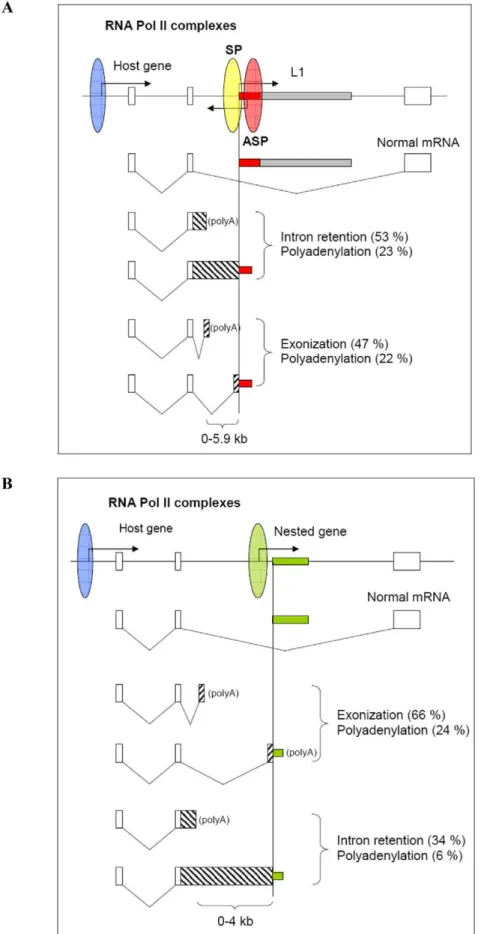Intronic L1 retrotransposons and nested genes cause transcriptional interference by inducing intron retention, exonization and cryptic polyadenylation.
Texto
Imagem
![Figure 1. Snapshot of L1- and nested gene-induced TI from UCSC Genome Browser [39]. Schematic representation of (A) intron retention in TRPC4AP (ESTs: DA794245, DB292589) upstream to full-length L1 PA5 element, (B) forced exonization and cryptic polyadenyl](https://thumb-eu.123doks.com/thumbv2/123dok_br/16322080.187581/3.918.90.764.88.949/snapshot-browser-schematic-representation-retention-upstream-exonization-polyadenyl.webp)



Documentos relacionados
In summary, our results revealed wide variability in the physical and chemical characteristics of habitats in the floodplain, which is caused by the distinct character- istics of
We examined the cholesteryl ester transfer protein (CETP) gene TaqI intron 1 B1/B2 polymorphism and the -629A/C CETP promoter polymorphism in respect to high-density
To determine whether these intron losses were MAPK gene- specific, we also compared the exon numbers of the flanking genes of MAPK4 and MAPK7 genes between three vertebrate
Plasmodium transcripts genome-wide and subsequently identified intron-containing markers from across the full range of asexual and sexual development. In order to identify
We found that intron retention is common among the mutants, with the retention in hos5-1 fry2-1 double mutant most dramatic, followed by fry2-1 and hos5 as well as rs40 rs41..
Notably, our targeted mutagenesis identifies the branch point nucleotide for intron four lariat formation and uncovers cryptic splice acceptor regions within intron four, providing
In this study, we performed a genome-wide identification and characterisation of invertase genes from Populus and revealed an invertase gene family with a total of 24 members
In our previous study, we identified candidate genes associated with growth and meat pro- duction traits by using Illumina Ovine SNP50 BeadChip technology and genome-wide associa-

